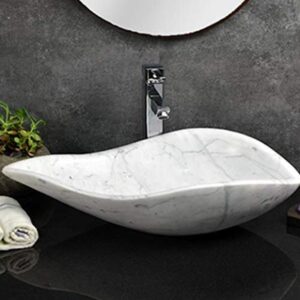Modern Kitchen Designs That Combine Style and Functionality
Modern kitchen designs have evolved to seamlessly combine style and functionality, making them the heart of contemporary homes. In today’s world, the kitchen is no longer just a place for cooking; it is a social hub, a workspace, and an area of personal expression. A modern kitchen blends clean lines, smart technology, and practical layouts to create a space that is both aesthetically pleasing and highly functional. One key element of modern kitchen design is the use of open-plan layouts. This design concept removes walls and barriers, allowing for a flow between the kitchen, dining, and living areas. It enhances both the sense of space and natural light, making kitchens feel more expansive and welcoming. The open-plan design encourages interaction, making it easy for family members and guests to gather while meals are being prepared. To maintain a clean and uncluttered look, modern kitchens often feature minimal cabinetry and hidden storage solutions. Custom cabinetry is designed to maximize storage while maintaining sleek, unobtrusive appearances.
Another defining feature of modern kitchen design Southampton is the integration of smart appliances. High-tech devices such as refrigerators, ovens, dishwashers, and coffee makers are designed not only to make cooking easier but to blend seamlessly with the overall aesthetic of the space. For instance, smart refrigerators allow homeowners to control temperatures remotely, keep track of groceries, and suggest recipes based on available ingredients. Induction cooktops and smart ovens with touch-screen interfaces allow for precise temperature control, offering convenience while maintaining a clean, contemporary look. Sleek, durable surfaces such as quartz, granite, and marble are popular for countertops due to their resilience and timeless appeal. These materials are both functional and elegant, with quartz, for example, being resistant to stains and scratches, making it ideal for heavy-duty use in busy kitchens. Backslashes also come in a wide variety of materials, from ceramic tiles to glass and stainless steel, each offering different levels of durability, ease of cleaning, and aesthetic appeal.
Lighting is another critical aspect of modern kitchen design. A mix of ambient, task, and accent lighting ensures that the space is both functional and visually dynamic. Under-cabinet lighting illuminates work surfaces, while pendant lights above islands or dining areas create a focal point. Skylights or large windows allow for natural light to pour into the kitchen, making it feel brighter and more inviting. Additionally, energy-efficient LED lighting is often used for its long-lasting properties and ability to adjust in terms of brightness and warmth, contributing to both energy savings and atmosphere. Functionality in a modern kitchen design also focuses on efficient workflow. The kitchen work triangle concept where the stove, sink, and refrigerator are positioned in a triangle shape for ease of movement is still widely used. However, modern layouts have adapted to create more flexibility, such as the inclusion of kitchen islands or breakfast bars, which provide additional prep space, storage, and seating.


 The synergy between the statement piece and its surroundings creates a harmonious yet visually arresting ambiance. Lighting, often underestimated, takes center stage when it comes to making a statement. An oversized chandelier suspended majestically in the center of a room can be both functional and a visual masterpiece. Its interplay with light and shadow not only illuminates the space but also adds a touch of glamour and grandeur. Alternatively, floor lamps with unconventional designs can serve as functional sculptures, casting an artistic glow that captivates the eye.
The synergy between the statement piece and its surroundings creates a harmonious yet visually arresting ambiance. Lighting, often underestimated, takes center stage when it comes to making a statement. An oversized chandelier suspended majestically in the center of a room can be both functional and a visual masterpiece. Its interplay with light and shadow not only illuminates the space but also adds a touch of glamour and grandeur. Alternatively, floor lamps with unconventional designs can serve as functional sculptures, casting an artistic glow that captivates the eye. The coffee table’s material and design choices can influence the ambiance of your living space. A glass coffee table imparts a sense of openness and modernity, while a wooden one exudes warmth and a rustic feel. Whether you opt for sleek lines or intricate craftsmanship, the coffee table adds depth and character to your home, complementing your overall décor in coffee table manufacturers. In a world that is constantly in motion, the coffee table stands as a steadfast presence, a symbol of the simple pleasures of life. It reminds us to slow down, connect with one another, and appreciate the art of conversation. Coffee and Conversations: Your New Centerpiece, the Coffee Table celebrates the revival of this often-underappreciated piece of furniture, repositioning it as the heart of our homes, where connections are formed, memories are made, and life unfolds in all its beauty.
The coffee table’s material and design choices can influence the ambiance of your living space. A glass coffee table imparts a sense of openness and modernity, while a wooden one exudes warmth and a rustic feel. Whether you opt for sleek lines or intricate craftsmanship, the coffee table adds depth and character to your home, complementing your overall décor in coffee table manufacturers. In a world that is constantly in motion, the coffee table stands as a steadfast presence, a symbol of the simple pleasures of life. It reminds us to slow down, connect with one another, and appreciate the art of conversation. Coffee and Conversations: Your New Centerpiece, the Coffee Table celebrates the revival of this often-underappreciated piece of furniture, repositioning it as the heart of our homes, where connections are formed, memories are made, and life unfolds in all its beauty. In the event that you own a bathroom sink at your home, guaranteeing bathroom sink security is of vital significance so your family and visitors can appreciate a loose and risk free understanding. While there are scores of wellbeing contraptions accessible in the market for example, cautions and sink covers nothing can be more ideal than introducing great quality steel sink fencing so as to forestall any suffocating mishaps. Recorded underneath are some special highlights which make steel bathroom sink fences the most ideal choice for guaranteeing bathroom sink security:
In the event that you own a bathroom sink at your home, guaranteeing bathroom sink security is of vital significance so your family and visitors can appreciate a loose and risk free understanding. While there are scores of wellbeing contraptions accessible in the market for example, cautions and sink covers nothing can be more ideal than introducing great quality steel sink fencing so as to forestall any suffocating mishaps. Recorded underneath are some special highlights which make steel bathroom sink fences the most ideal choice for guaranteeing bathroom sink security: